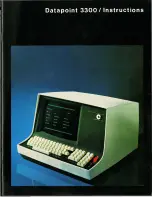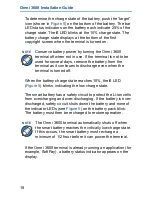
1. If your PTC has an internal radio, an antenna screws into this connector. If your PTC has two radios, the antenna for the spread spectrum
radio screws into this connector. If the unit does not have a radio, the connector is sealed with a rubber plug or a SEMS screw (see
for part numbers). The antenna sends and receives radio transmissions, allowing the PTC to communicate with a host computer. The
antenna must be attached to the PTC before the unit can be used.
2. The PTC’s beeper can be used by your application to warn you of problems or to prompt you to take an action. For example, the PTC warns
you with a series of beeps if the bridge battery is running out of power.
See
for an explanation of the standard beep codes. Other
codes may be specific to your application. Your application controls how the beeper is used and may allow you to adjust the beeper’s volume.
3. Mounting handles can be inserted into these two holes (one on each side of the PTC) to secure the unit to a mounting bracket. See
for instructions.
4. Loosening these two knobs (one on each side of the PTC) allows the keyboard to be rotated into various positions. Tightening the knobs
secures the keyboard in position.
4. Keyboard knob
3. Mounting hole
2. Beeper
1. Antenna connector
Figure 3. The PTC-870IM (side view)
25
















































